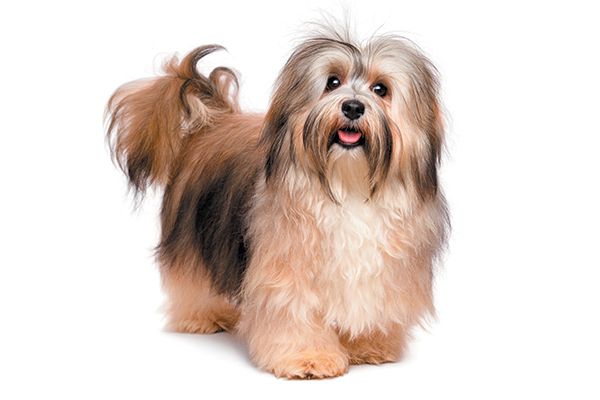[ad_1]
Contents
Quick Facts
- Weight: 7 – 14 pounds
- Height: 8.5 – 10.5 inches
The Look of a Havanese
The Havanese has a small, sturdy frame—slightly longer than tall—covered in a long, silky coat. Its slightly rounded head has a short rectangular muzzle, square nose, black lips and high-set, hanging ears that are mostly covered in hair. Its dark eyes have a sweet but inquisitive expression. Its neck arches slightly, sloping down to a deep chest, straight back and a plumed tail that carries over the back. Its long, lightweight coat can come in almost any color. Overall, the Havanese has a distinguished but disheveled look.
Traits
- Bold
- Loving
- Gentle
- Pleasant
- Curious
- Social
- Attentive
Ideal Human Companion
- Retirees
- Singles
- Families
- City dwellers
What They Are Like to Live With
The Havanese may have originated as coddled companions of the wealthy, but over the centuries they have become sweet, endearing family pets. This friendly, affectionate and clever canine is a wonderful member of the household, forming strong family bonds and winning everyone’s heart. It is easygoing, adaptable and trainable.
If you’re looking for an excellent watchdog that also happens to be cuddly, the Havanese can really deliver. Alert and protective with a good sense of restraint, it will bark loudly to alert visitors but knows how to calm down when it realizes there’s no danger. Because it’s small and fairly quiet, the Havanese makes an excellent apartment dog.
You’re never really alone with a Havanese in the house: It can be very attentive, following you around the house or watching you read on the couch. It also loves squeaky toys, games on the carpet and long walks through the neighborhood. In fact, as long as you’re keeping it company, the Havanese will always be happy.
Things You Should Know
A healthy Havanese can live as long as 15 years. Though generally healthy, some can develop eye problems and dry skin. The Havanese requires regular brushing and grooming. Its coat, if kept long, needs to be brushed every day, and its eyes and ears should be checked regularly to prevent infection.
Havanese History
The Havanese is the only dog native to Cuba. The breed probably made its way to Cuba hundreds of years ago via trade ships from the Canary Islands. By the 18th century, the Havanese was a major fixture in aristocratic homes across Cuba. After the Revolution in 1959, many wealthy Cubans came to the United States. Luckily, they brought their Havanese along: This special group of11 canines helped prevent the breed from becoming obsolete.
[ad_2]

